
The picture “Death and the miser”, dated by the mature Bosch, dated 1490-1500 years, is, apparently, part of a larger work. This can be judged on the basis of a narrow format and a sharp perspective. On the other hand, there is a finished full-scale drawing, perhaps specially made for this scene. It is possible that Bosch had a plan for an independent moralizing work. The composition of the picture serves as a kind of illustration to the popular in the XV century. the theological book “Ars moriendi”, repeatedly reprinted in the Netherlands and Germany.
This little “guide” describes the temptations with which the dying legion of demons, gathering at the deathbed, overcomes the dying man, and how his guardian angel gives him consolation and strength to resist them every time. In the book, the victory is won by an angel – triumphantly, it is he who raises his soul to Heaven, while the devil’s host wails in helpless rage below. In the picture of Bosch the outcome of this battle is far from a foregone conclusion.
The picture shows a narrow and high bedroom, in the open door of which already looks Death. She hesitates, pointing the arrow and ready to hit the miser, waiting for his decision. succumb to the demon and fall into hell or follow the angel into paradise. The action takes place gradually, from the bottom up. In the foreground, weapons and armor allude to power and strength as an initial source of affluence. Over time, wealth grows through usury, and it captures rats and salamanders.
Another demon with barely marked wings leaned against the barrier with a red mantle thrown over him and a knight’s sword leaning against him – both must point to power and a high position, which the person also loses, leaving for another world.
Closer to the viewer is depicted this same miser during his lifetime, putting coins into a sack, which is kept by that same demon, who lures the miser on his deathbed to hell. Here the allegory of the futility of stinginess is guessed. Without spending money for good, and putting them in a trunk, the miser spent his whole life saving for the devil, and not for himself, and the devil with this money will drag him to hell.
In the hand of the rich man there is a rosary, on the belt there is a key to the chest. The last scene – the stingy one faces a choice: to stay with the money, take a bag of coins that Greed extends to him with a toad face, or listen to the guardian angel and turn his gaze to the crucifixion and God.
Behind a man closely watches the Devil, hanging from the high canopy of his bed, and the lean Death in the doorway awaits the decision of the rich man – from it, in any case, he does not hide.
The winged dwarf in the foreground at the barrier is a kind of signature of Bosch. Perhaps this is a self-portrait of a master who, with a smile, reflects on wealth and death.
 Hell. The right shutter of the altar The Last Judgment by Hieronymus Bosch
Hell. The right shutter of the altar The Last Judgment by Hieronymus Bosch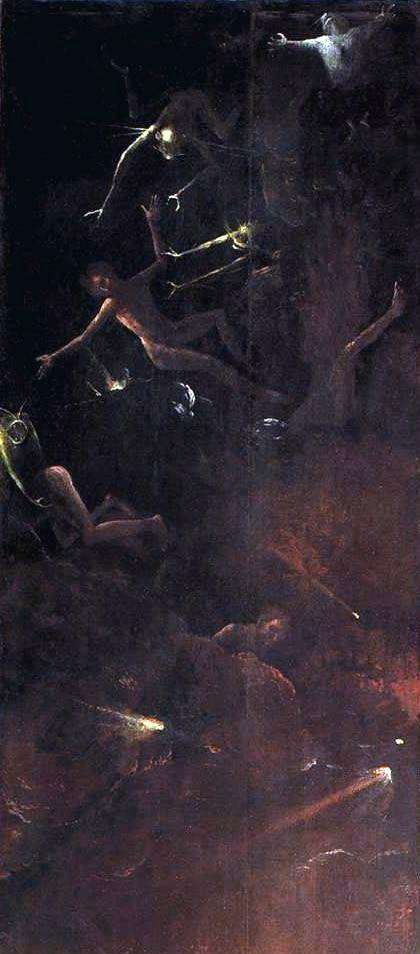 The overthrow of sinners, Visions of the Hereafter by Hieronymus Bosch
The overthrow of sinners, Visions of the Hereafter by Hieronymus Bosch Hell, the altar of Voznesen. The right shutter by Hieronymus Bosch
Hell, the altar of Voznesen. The right shutter by Hieronymus Bosch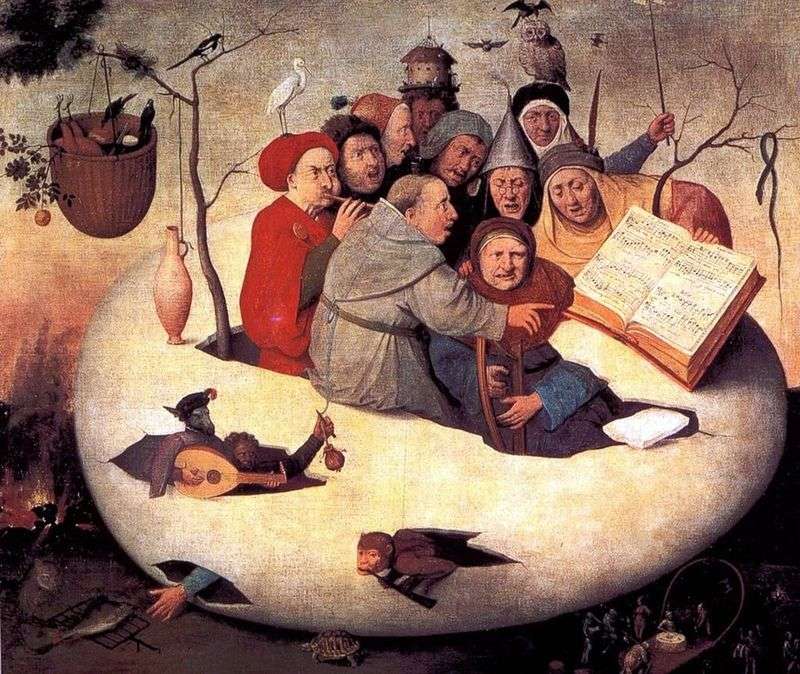 Concert in the egg by Hieronymus Bosch
Concert in the egg by Hieronymus Bosch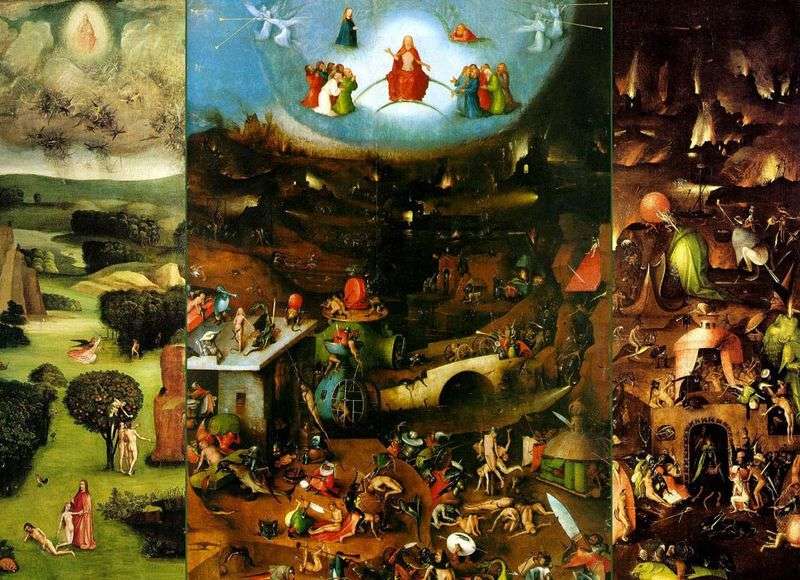 The Last Judgment by Hieronymus Bosch
The Last Judgment by Hieronymus Bosch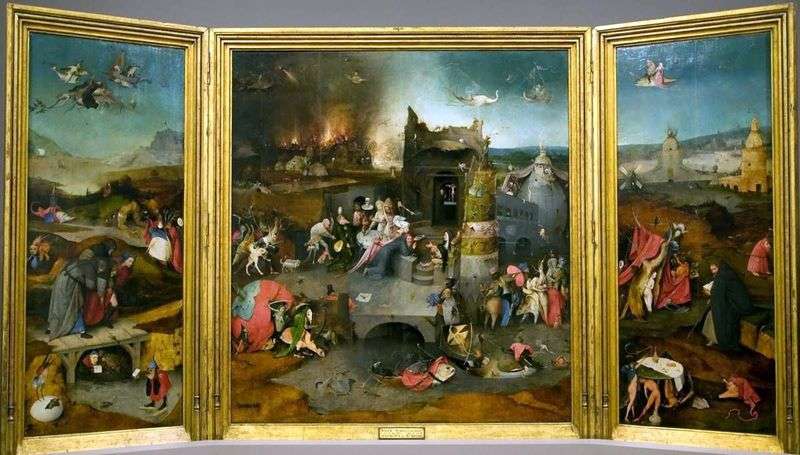 The Temptation of St. Anthony by Hieronymus Bosch
The Temptation of St. Anthony by Hieronymus Bosch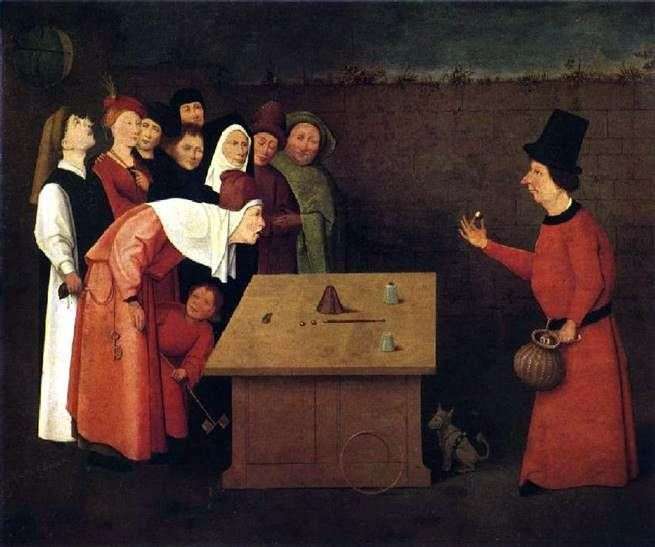 Magician Charlatan by Hieronymus Bosch
Magician Charlatan by Hieronymus Bosch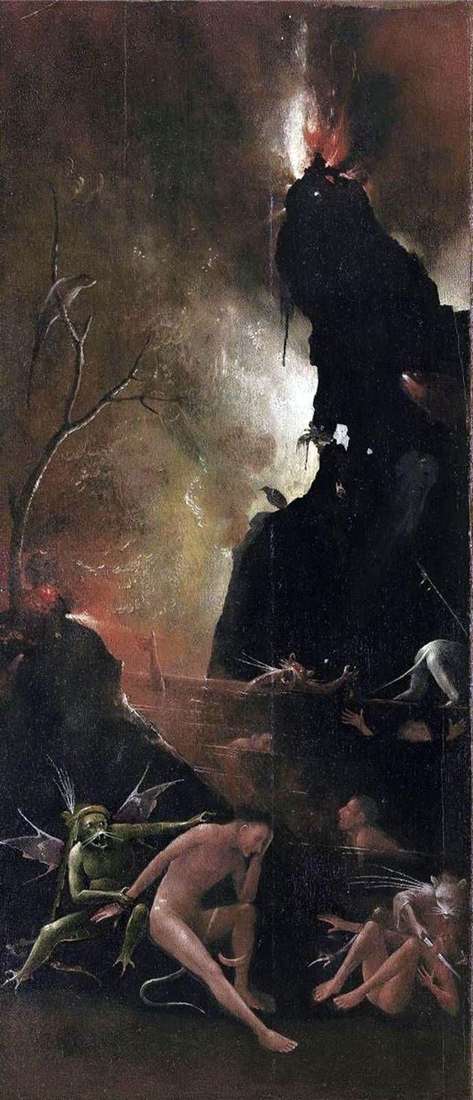 Hell’s River, Visions of the Hereafter by Hieronymus Bosch
Hell’s River, Visions of the Hereafter by Hieronymus Bosch